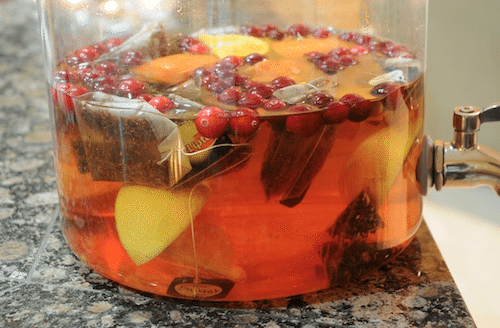Flavonoids: Find Them in Tea and Produce
 You can find flavonoids in both tea and produce. In today's post, we've assembled everything you need to know about these healthful compounds and the foods that carry them!
You can find flavonoids in both tea and produce. In today's post, we've assembled everything you need to know about these healthful compounds and the foods that carry them!
Flavonoids and Tea
Traditional teas have high concentrations of catechin, as well as small amounts of quercetin. Both of these elements are flavonoids, whose health benefits we addressed in Tuesday's post. It turns out that tea is a great source of these fantastic phytochemicals. Choose green, oolong, or black tea, and you will have one of the highest flavonoid-containing items in the store. True teas are made from the dried leaves of the Camellia sinensis, which is otherwise known as the tea plant. They can be made into green, oolong, or black tea, depending on how the leaves are handled after they were picked. Green tea is unfermented, which means that the leaves are not allowed to oxidize after they are picked. Black tea, on the other hand, is fermented for the longest period of time.Want to learn more about tea? Check out our fun facts below...
- Black tea has a strong flavor. This is an excellent choice for those trying to switch from coffee to tea. English breakfast tea is probably the most popular form of black tea.
- Oolong tea looks like black tea in its dried state, but a cup of oolong tea has a rich golden color and sweet flavor.
- Green tea has a mild, pleasant flavor. It is delicious either hot or iced.
- We are not aware of much about studies of flavored teas and/or herbal teas, so we won't go into their health benefits here. However, they still may be a great replacement for coffee.
Flavonoids and Produce
Both MyPlate and the Dietary Guidelines for Americans encourage people to eat more fresh fruits and vegetables. These foods are full of vital nutrients and, of course, flavonoids. Start your search for these flavonoid-rich foods in the produce aisle and your farmer's market.When you are shopping for produce, think color. A variety of colors will provide you with a variety of flavonoids.
- Red, pink, blue, and purple fruits and veggies contain anthocyanins. In this case, fresh is best. That's because these these compounds are heat and light sensitive. Try blueberries, raspberries, strawberries, cranberries, cherries, red grapes, beets, and more!
- Orange or dark green fruits and veggies are full of beta-carotene. Not sure which orange or dark green foods to try? Have carrots, cantaloupe, sweet potatoes, winter squash, and dark leafy greens like spinach or kale.
- Many red fruits contain catechins, as does red wine.
- Citrus foods and juices contain hesperetin and naringenin, as well as quercetin.
- Onions have the highest concentration of quercetin, about 300 mg/kg. More of this is found in the skin than the onion itself, so use whole onions for soups, stews, and broths. Just be sure to remove the skin before serving.
- Some green vegetables also contain quercetin or kaempferol.
Brought to you by: The Nutrition Education Store. Visit it today!
